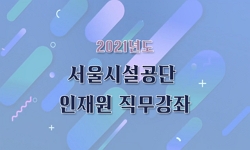The purpose of this study is to seek a doctrinal foundation for program development that combines Earthing, which focuses on physical healing, and Buddhist meditation to achieve peace of mind and liberation. Just as MBSR or MBCT in the West, which int...
http://chineseinput.net/에서 pinyin(병음)방식으로 중국어를 변환할 수 있습니다.
변환된 중국어를 복사하여 사용하시면 됩니다.
- 中文 을 입력하시려면 zhongwen을 입력하시고 space를누르시면됩니다.
- 北京 을 입력하시려면 beijing을 입력하시고 space를 누르시면 됩니다.
Earthing 명상프로그램 개발제안 : - 불교의 교리에 기반하여 - = Proposal for Development of Earthing Mindfulness Program -based on Buddhist docterine-
한글로보기https://www.riss.kr/link?id=T16940325
- 저자
-
발행사항
서울 : 동국대학교 불교문화대학원, 2024
-
학위논문사항
학위논문(석사) -- 동국대학교 불교문화대학원 , 국제불교영어학과 , 2024. 2
-
발행연도
2024
-
작성언어
한국어
- 주제어
-
발행국(도시)
서울
-
형태사항
; 26 cm
-
일반주기명
지도교수: 안양규
-
UCI식별코드
I804:11020-000000088182
- DOI식별코드
- 소장기관
-
0
상세조회 -
0
다운로드
부가정보
다국어 초록 (Multilingual Abstract)
The purpose of this study is to seek a doctrinal foundation for program development that combines Earthing, which focuses on physical healing, and Buddhist meditation to achieve peace of mind and liberation. Just as MBSR or MBCT in the West, which introduce Buddhist meditation methods, are very helpful for mind and body healing, it is inferred that internalizing Earthing in Buddhist meditation will be very helpful for mind and body health. The concept of Earthing was introduced by Clinton Ober in the United States in the early 2000s, and has recently been gaining popularity in Korea in the form of “barefoot walking” in 2023. In this study, I looked at several studies on the physical healing effects of Earthing, which emphasizes contact with the earth. In several studies, Earthing has raised interest even in the category of integrative medicine or alternative medicine, and through scientific and rational research, it has been found that Earthing brings benefits to physical health. In Buddhism, forms of Earthing can already be found in many places among the practice methods that have been passed down for 2,600 years. In the early scriptures, the Buddha's act of touching earth appeared here and there, and in the Mahayana Sutra, the practice and ideas of Bodhisattva using the earth, such as compassion, Ksitigarbha ideology, and Pure Land ideology, are discovered. This study utilizes existing literature and research to understand the characteristics of Earthing and employs methods such as exploring Chinese translated Buddhist scriptures, Buddhist texts, and other research to compile and categorize content related to Earthing within the vast database of the existing Buddha's teachings. The findings of this study reveal that not only were there elements of Earthing in the practice of Buddha Shakyamuni, but also that there were many positive concepts related to the land in Buddhist scriptures and writings. It is also noted that the positive image of the Earth is a universal one for humanity. Therefore, there is nothing foreign about creating a Buddhist meditation program that includes elements of grounding within the Buddhist doctrinal framework. I also believe that if this is programmed and practiced, it can be used positively for mental and physical health and spread. In addition to the main purpose of this study, I created a CEMM program by applying practical methods, including Earthing, which I do every day. I hope that through the CEMM program developed in this way, a Buddhist life that is healthy for both body and mind will spread widely.
목차 (Table of Contents)
- 목 차
- 제1장 서 론 1
- 제1절 연구의 목적 1
- 제2절 연구의 범위와 방법 4
- 제2장 서구의 Earthing 프로그램 5
- 목 차
- 제1장 서 론 1
- 제1절 연구의 목적 1
- 제2절 연구의 범위와 방법 4
- 제2장 서구의 Earthing 프로그램 5
- 제1절 Earthing의 정의 및 종류 5
- 1. Earthing의 정의 5
- 2. Earthing의 종류 6
- 제2절 Earthing의 기원과 역사 8
- 제3절 Earthing의 효과 10
- 1. 육체적 효과 12
- 2. 정신적 효과 23
- 제3장 대지(大地)와 명상에 관한 불교적 견해 26
- 제1절 대지(大地)에 관한 불교적 견해 26
- 1. 초기불교의 견해 26
- 2. 대승불교의 견해 43
- 제2절 대지(大地)와 관련된 수행 57
- 1. 경행(經行) 57
- 2. 대지(大地) 까시나(kasina) 58
- 3. 정토왕생(淨土往生) 62
- 제4장 Earthing 명상프로그램의 개발 64
- 제1절 Earthing 명상프로그램의 개발 배경 64
- 1. 사회적 유행 64
- 2. 불교포교(佛敎布敎) 67
- 제2절 Earthing 명상프로그램의 이론적 구성 69
- 1. 알아차림(Mindfulness) 명상 70
- 2. 자비명상(慈悲冥想) 72
- 3. 촉지(觸地 Earthing) 78
- 4. 기존 명상프로그램의 활용 80
- 제3절 불교 Earthing 명상프로그램의 개발 85
- 1. 불교 Earthing 명상프로그램의 명칭 85
- 2. 프로그램의 구성과 내용 88
- 3. MBSR, MBCT와 CEMM의 내용비교 95
- 제5장 결 론 97
- 참고문헌 100
- ABSTRACT 111
- <표 목 차>
- <표 3-1> 지역별 지모신 32
- <표 3-2> 경전에 나타난 심지(心地)와 대지(大地) 56
- <표 4-1> MBSR 프로그램의 수련 내용 82
- <표 4-2> MBCT 프로그램의 학습 내용 84
- <표 4-3> 불교 Earthing 명상프로그램의 명칭 87
- <표 4-4> 명상프로그램의 공통사항 88
- <표 4-5> 불교입문자, 저연령층 프로그램 89
- <표 4-6> 불교도인의 프로그램 90
- <표 4-7> CEMM(慈悲地觀) 기관보급용 프로그램 94
- <표 4-8> MBSR, MBCT와 CEMM의 내용비교 96
- [그림목차]
- [그림 4-1] 구글 건강섹터에 나타난 Earthing과 Grounding 65
- [그림 4-2] PUBMED에 등재된 Earthing 관련 논문 66









